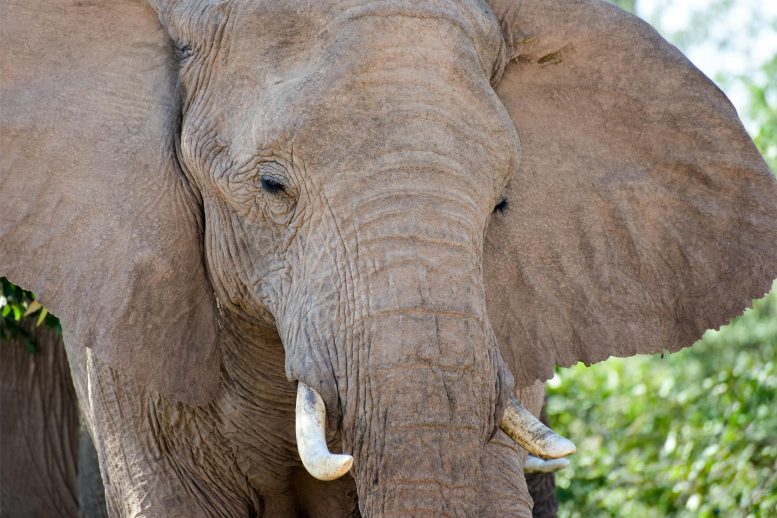
The African bush elephant, Loxodonta africana, survived the Quaternary extinction.
Mammals with larger brains than similar-sized related species were more likely to have survived extinction during the Late Quaternary (between 115,000 to 500 years ago) reports a study published in Scientific Reports.
Previous research has established that mammals with a larger body size have an increased risk of extinction, but the chances of survival are less clear for large-bodied species with large brains such as the African bush elephant and the polar bear.
Jacob Dembitzer and colleagues investigated the brain sizes of 291 living mammal species and 50 mammal species that went extinct during the Late Quaternary. The authors collected data on the volume of 3,616 specimen skulls, with a median of three specimens per species, to calculate brain size, and used previous research for data on body mass and extinction dates.
Species that survived the Late Quaternary had on average 53% larger brains than similar-sized (body mass) related species that went extinct. The authors found body mass was the most important factor in determining extinction, but brain size was a significant predictor of extinction.
Within taxonomic orders, a closely related group of species, the authors found one of the biggest differences in body size was between Pilosans. The authors found the extinct ground sloth Lestodon armatus (weighed 4.6 tonnes) was 192 times larger in body size than the giant anteater, Myrmecophaga tridactyla (weighing 24kg or 53lb). In the order Proboscidea (elephants, mammoths and their kin), a group that tends to have large brains, the extinct straight-tusked elephant, Palaeoloxodon antiquus (weighed 11 tonnes) was 2.8 times larger compared to the African bush elephant, Loxodonta africana (weighing 3.9 tonnes).
The authors propose that larger brain size may have helped large-bodied species that were prone to extinction to survive. A larger brain may have helped species to adapt quickly to changes such as increased hunting by humans, and may have meant the species were able to remember several sources of food and water within a changing landscape.
Reference: “Small brains predisposed Late Quaternary mammals to extinction” by Jacob Dembitzer, Silvia Castiglione, Pasquale Raia and Shai Meiri, 31 March 2022, Scientific Reports.
DOI: 10.1038/s41598-022-07327-9









Be the first to comment on "Mammals With Larger Brains Were More Likely To Survive Late Quaternary Extinction"